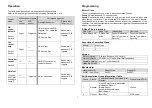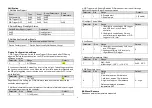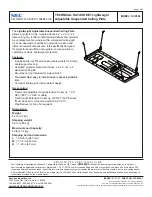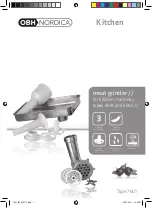
4
recommended setting is around midpoint of the scale giving approximately 5
minutes.
(2) Lux level adjustment
The LUX knob sets the threshold of ambient brightness level that will activate
the motion sensor. The knob can be adjusted between
“ ” mark (always
trigger regardless of light level) and the moon symbol (trigger only when dark).
The adjustable Lux range is about 10 - 900 Lux.
1. To set the lux level, turn the Time-
off knob to “T” for maximum response.
2. Turn the LUX control knob to the
“moon” (dusk) position.
3. Wait until the ambient light reaches the level of darkness at which you wish
the floodlight to activate.
4. Slowly rotate the Lux knob anti-clockwise while keep creating motion during
the process until the floodlight turns on. At this position the light will operate at
approximately the same level of darkness each evening.
5. Set the Time-off knob back to the desired preset time.
Note:
When connected to a Z-wave controller, this manual setting will be
overwritten by the settings through the Z-wave controller.
Z-wave Auto Inclusion
The unit supports Auto Inclusion feature where it will automatically enter Inclusion
mode when first powered up after a factory reset.
1. Turn off power to the floodlight by turning off the wall switch.
2. Try to relocate the Z-wave controller nearer to the floodlight, with at most one
wall separation between them.
3. Put the Z-Wave Controller into Inclusion mode.
4. Turn on the wall switch of the floodlight. The floodlight will then turn on for 5
seconds and the Link LED will start to blink slowly.
5. When the Link LED stops blinking the includion process is complete.
Note:
If you are connecting this unit to a Z-wave controller that utilizes the S2
security protocol, you may be asked by your controller to enter a 5-digit
Device Specific Key (DSK) that is unique to each unit. This can be found in
one of two places:
- on the QR code label on the back of the unit
- on the insert card inside the packaging.
6. Turn on the floodlight using the Z-wave controller to check if the auto inclusion
is working properly.
If Auto Inclusion fails, refer to the Troubleshooting section regarding Manual
Inclusion.
Note:
HS-FLS100-G2 also supports Z-wave SmartStart technology which allows
inclusion of device with controller through automatic means, or through a quick
scan of a QR code. The controller must support Z-wave SmartStart feature for it
to work.


























